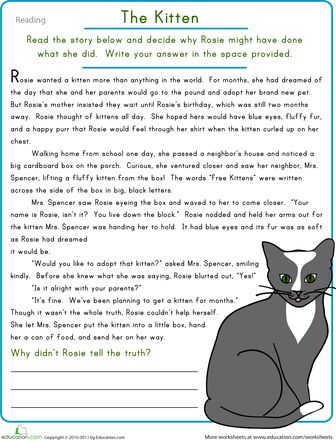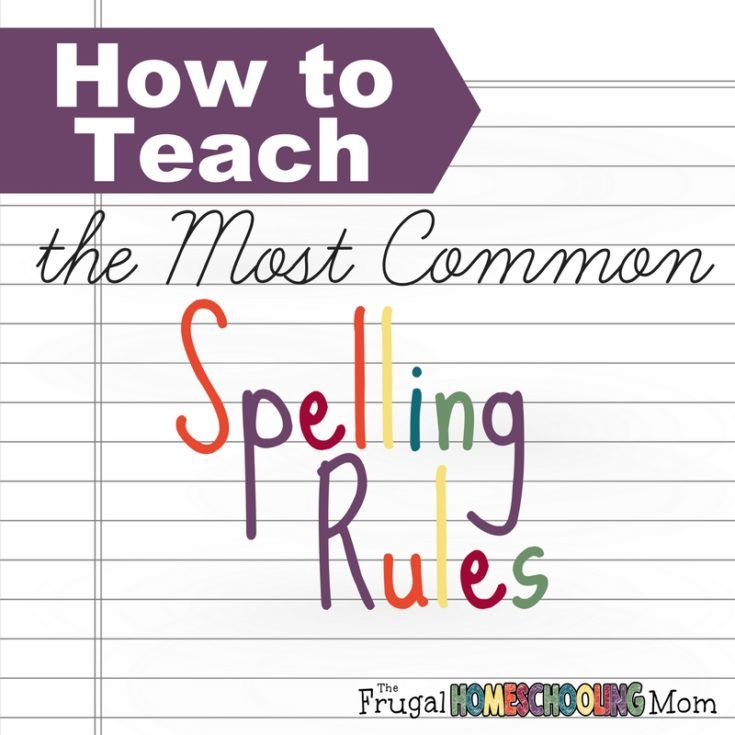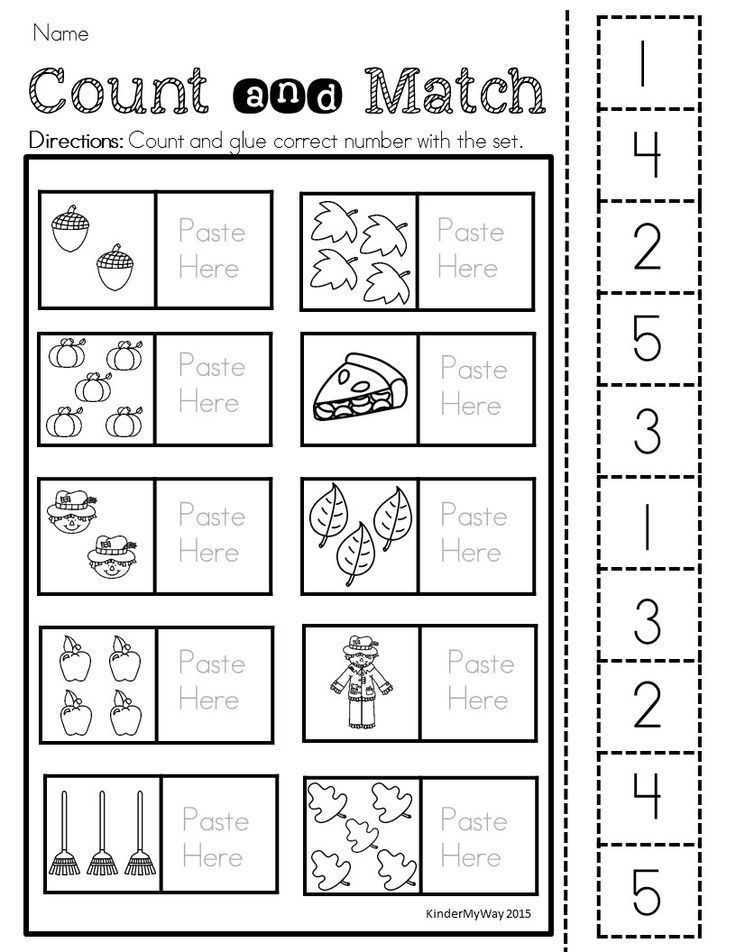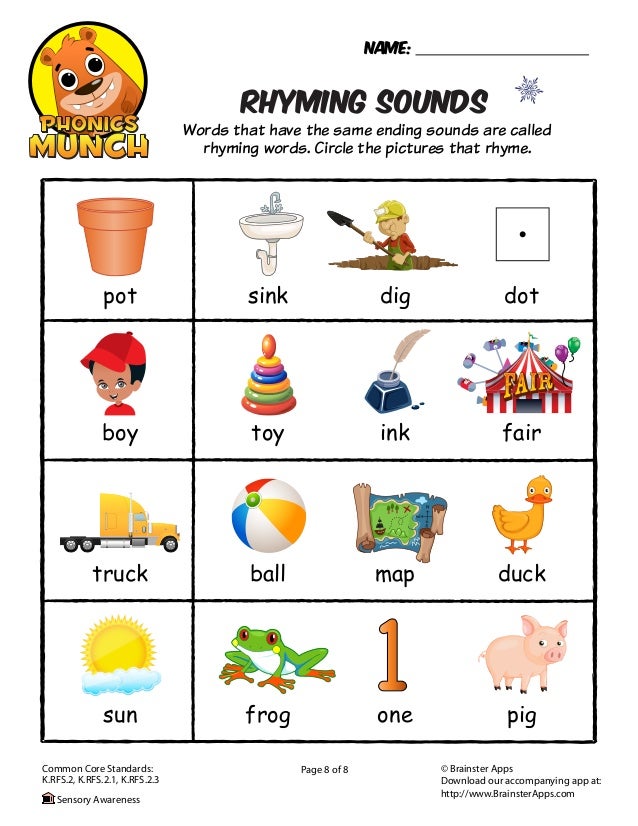Concept of print
Concepts of print
Concepts of Print refers to the awareness of 'how print works'. This includes the knowledge of the concept of what books, print, and written language are, and how they function. It encompasses a number of understandings that allow the reading process to take place including:
- understanding that print conveys a message
- knowledge about book orientation and directionality of print, and
- distinction between sentences, words and letters, and
- knowledge of the alphabetic system and the difference between letters and words.
Understandings/elements of concepts of print in the English language
The main understandings or elements of Concepts of Print for English include the concept of text (how a text conveys a message), concept of book (how a book works, how different texts are organised), the idea of directionality (that English books are read from left to right, top to bottom), and other mechanical features (spacing, punctuation, the difference between letters, numerals, and other symbols).
Components of concepts of print
Concepts of print are important for emergent and early reading and writing (Clay, 1993).
Concepts of text
Understanding that print relays a message
Concept of book
- Book handling - holding the book the right way up
- Front cover, back cover
- Title, author, illustrator, blurb
Directionality
- Beginning at the front of the book, ending at the back
- Turning pages right to left
- Concept of top and bottom of a page - beginning at the top of the page and ending at the bottom of the page
- Reading pages from left to right
- Reading words from left to right
- Return sweep - reading left to right then sweep back to the beginning of the following line of text
- Concept of first, middle, last
- Word-to-word matching
Mechanics
- Knowledge that words are separated by spaces
- Recognising the difference between symbols including, alphabetic letters vs numerals vs punctuation
- The purpose of punctuation and capital letters
- Understanding that most printed words are read the same way each time (e.
 g. w-o-u-l-d will always be 'would')
g. w-o-u-l-d will always be 'would')
Through exposure to shared book reading in early childhood, and through modelled, shared, and guided reading in the early years, children develop concepts of print.
Examples to support the development of Concepts of Print
Concepts of print should be taught through text within the literacy lesson, for example by:
- reading a poem or a song that students are familiar with and highlighting features of the text - e.g. capital letters, full stops and discussing the purpose of these features
- reading a storybook and modelling and/or identifying features of text while reading, for example differences between words and letters, directionality, return sweep, front and back cover of book etc.
- reading books with different font types/sizes, bold, exclamation mark, question mark and capital letters
Building a print rich classroom environment - using labels, alphabet posters, word walls, reading corners also contributes to the development of concepts of print.

For examples, see:
- Modelled Reading
- Shared Reading
- Guided Reading
Alphabet knowledge
Alphabet knowledge is also considered a Concepts of Print component. This includes knowledge of the names of each letter, the order of the alphabet, recognition of each upper and lower case letter, and knowing the difference between letters and words.
Alphabet Knowledge includes recognising all the letters of the alphabet by name. This includes recognising upper and lower case letters. The metalinguistic awareness of knowing the difference between a "word" and a "letter" is also important for alphabet knowledge.
Relationship with phonics
While alphabet knowledge is the ability to recognise and name upper and lower case letters, phonics is the knowledge of sound-letter patterns, that is the sounds that letters make.
As there are 44 sounds (phonemes) , but only 26 letters, many letters make more than one sound. Also, letters are used to form graphemes, which could consist of one letter (graph), two letters (digraph), three letters (trigraph) or four letters (quadgraph).
Also, letters are used to form graphemes, which could consist of one letter (graph), two letters (digraph), three letters (trigraph) or four letters (quadgraph).
An important first step to learn the relationships between sounds is to have well developed Alphabet Knowledge: that is to know what each letter is called, and to be able to recognise these letters quickly and reliably.
Once students have strong alphabet knowledge they are able to apply this knowledge to learn about the sounds that letters and letter patterns (graphemes) make, and how phonemes map onto graphemes, i.e. phonics.
For more information, see:
- Phonics
- The 44 Sounds of English (docx - 116.91kb)
Relationship with phonological awareness
While alphabet knowledge is the ability to recognise and name upper and lower case letters, Phonological awareness refers to the awareness of sounds, rhymes, and syllables within words. Phonemic awareness (a critical subset of phonological awareness) refers to the ability to identify, segment, blend, delete and manipulate individual sounds. Alphabet knowledge is related to phonological awareness as children need to understand that words are made up of syllables, onset/rime, and individual sounds, and that letters of the alphabet are used to represent these sounds, as graphemes.
Alphabet knowledge is related to phonological awareness as children need to understand that words are made up of syllables, onset/rime, and individual sounds, and that letters of the alphabet are used to represent these sounds, as graphemes.
For more information, see: Phonological Awareness
Examples of alphabet knowledge activities
Contextualised teaching of alphabetic knowledge can occur through reading a fiction or non-fiction text to, for example:
- introduce the sound and the letter in focus, writing the letter before reading the text
- highlight particular letter/letters within the text
- identify initial sounds of words and distinguish upper and lower case letters
- recognise consonant digraphs/trigraphs
- discuss the different sounds that a letter can make from examples in a text
- find words that contain different consonant diagraphs e.g. /sh/, /ch/, /th/ -lunchbox, shoes, should, the, that
- compile words or letters from a text into lists to make games that will promote multiple exposure and repetition of alphabetic knowledge such as bingo, snap, memory, tic tac toe, letter sort.

For examples, see:
- Modelled Reading
- Shared Reading
- Guided Reading
How does concepts of print relate to phonological awareness and phonics?
Phonological awareness allows students to hear the differences between words and sounds. Concepts of Print includes the recognition of symbols as letter shapes. Once this understanding is established, the letter shapes can be associated with sounds, connecting the visual, auditory and oral systems.
Links to the Victorian Curriculum - English
Foundation
Reading
- Recognise all upper- and lower-case letters and the most common sound that each letter represents (Content description VCELA146)
- Understand concepts about print and screen, including how books, film and simple digital texts work, and know some features of print, including directionality (Content description VCELA142)
Level 1
Reading
- Understand concepts about print and screen, including how different types of texts are organised using page numbering, tables of content, headings and titles, navigation buttons, bars and links (Content description VCELA177)
Links to the Victorian Curriculum - English as an Additional Language (EAL)
Pathway A
Reading and viewing
Level A1
- Understand the direction of English text (VCEALA034)
- Understand that texts are meaningful (VCEALA035)
- Distinguish Roman script from non-Roman script (VCEALA039)
- Understand and explore the basic features of different texts (VCEALL043)
- Understand and explore the basic features of different texts (VCEALL043)
- Identify some sounds in words (VCEALL050)
- Recognise capital letters, spaces and full stops (VCEALL052)
- Follow text with finger while reading (VCEALL053)
Level A2
- Understand how different types of images in texts contribute to meaning (VCEALA116
- Understand and use a small range of metalanguage for elements of text (VCEALL125)
- Relate most letters of the alphabet to sounds (VCEALL131)
- Understand and use simple metalanguage for books and reading (VCEALL044)
- Recognise that full stops and question marks separate text (VCEALL133)
Writing
Level A1
- Respond to the terms 'writing' and 'drawing' appropriately (VCEALA059)
- Illustrate a simple text (VCEALC058)
- Write a simple text that fulfils a function (VCEALC057)
- Recognise the importance of accurate reproduction of letters and words (VCEALA060)
- Use some conventions for printed English (VCEALL081)
- Experiment with some familiar punctuation (VCEALL079)
- Understand some terminology of writing in English and/or home language (VCEALA068)
Level A2
- Illustrate texts purposefully (VCEALC139)
- Use some punctuation consistently (VCEALL158)
- Adjust size of writing, colour, layout and choice of media to support meaning (VCEALL160)
Pathway B
Reading and viewing
Level BL
- Show awareness that texts convey meaning (VCEALA191)
- Distinguish Roman script from non-Roman script (VCEALA195)
- Recognise and explore texts in different media and modes (VCEALL199)
- Understand and explore the basic layout and conventions of simple texts (VCEALL200)
- Use basic terminology of reading (VCEALL202)
- Recognise the letters of the alphabet (VCEALL208)
- Understand the function of spaces, capital letters and full stops (VCEALL209)
- Demonstrate reading-like behaviour (VCEALL210)
- Attempt to self-correct (VCEALL211)
Writing
Level BL
- Copy words, phrases or sentences accurately and carefully (VCEALC216)
- Understand the difference between writing and drawing, and that writing changes according to context and purpose (VCEALA219)
- Apply common conventions when copying or writing texts (VCEALL236)
- Copy basic punctuation as part of writing work (VCEALL238)
References
Clay, M. M. (1993). An observation survey of early literacy achievement. Heinemann, 361 Hanover St., Portsmouth, NH 03801-3912.
M. (1993). An observation survey of early literacy achievement. Heinemann, 361 Hanover St., Portsmouth, NH 03801-3912.
Concepts of print (emergent literacy)
The awareness of how print works including emerging knowledge about books, print, and written language, and how we use them.
Concepts of print can be described as a "set of rules" that are followed by readers and writers so that the text can be understood in the intended way. Concepts of print demonstrate to children the logistics of reading and writing, which allow the processes of literacy to take place.
For example:
- understanding that print relays a message
- knowledge about book orientation and directionality of print
- book handling (e.g. holding a book right way up, turning pages)
- emerging knowledge of the alphabet
- awareness of books, pages, words and letters.
Children who are learning about books and reading need to know these concepts so that they are able to understand the rules and begin to understand the message.
Examples of concepts of print
The main understandings or elements of concepts of print for English include the concept of text, concept of book, the idea of directionality, mechanical features, and alphabet knowledge. Concepts of print are important for emergent reading and writing (Clay, 2013; Justice & Ezell, 2004; Piasta et al., 2016).
From a very young age children engage in writing and drawing to represent real things (Bradford and Wyse, 2010). Children can distinguish between drawing, writing, and numbers based on their understanding of the concepts they represent (Lancaster, 2007; Wells Rowe & Neitzel, 2010).
Using verbal and non-verbal cues to direct children’s attention during reading affects their later print knowledge and literacy skills (Justice & Ezell, 2004).
Similarly, calling children’s attention to the sound structure of words during reading promotes their phonological awareness (Piasta et al., 2016). Shared reading with embedded vocabulary instruction also helps children to make meaning from print, especially when reading is coupled with extension activities (Piasta et al. , 2016).
, 2016).
Concepts of print examples diagram
Concept of text
- Understanding that print relays a message
Concept of book
- Book handling - holding the book the right way up
- Front cover, back cover
- Title, author, illustrator, blurb
Directionality
- Beginning at the front of the book, ending at the back
- Turning pages left to right
- Concept of top and bottom of a page - beginning at the top of the page and ending at the bottom of the page
- Reading pages from left to right
- Reading words from left to right
- Return sweep - reading left to right then sweep back to the beginning of the following line of text.
Mechanics
- Knowledge that words are separated by spaces
- Recognising the difference between symbols including, alphabetic letters vs. numerals vs. punctuation
- The purpose of punctuation and capital letters
- Understanding that most printed words are read the same way each time (e.
 g. the letters w-o-u-l-d will always say 'would').
g. the letters w-o-u-l-d will always say 'would').
Alphabet knowledge is also considered a concepts of print component. This includes:
- knowledge of the names of each letter
- knowing the order of the alphabet
- recognition of each upper and lower case letter
- knowing the difference between letters and words.
The metalinguistic awareness of knowing the difference between a "word" and a "letter" is also important for alphabet knowledge. This is because children need these metalinguistic terms to talk about the concepts they are grasping, as they begin to recognise familiar words and letters.
It should be noted that children are not required to have an extensive knowledge of the sounds that letters make (phonics) before transition to primary school. However, being able to recognise and name letters (alphabet knowledge) is a very useful emergent literacy skill, encouraged in Language and Emergent Literacy Learners. The development of alphabet knowledge before school (along with phonological awareness and oral language) is an important predictor of early reading success.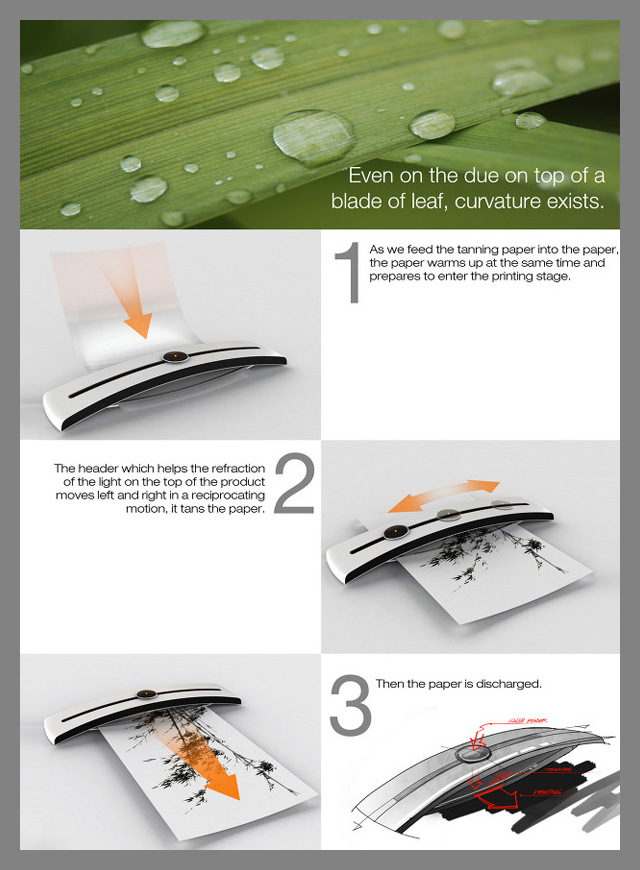
Part of the mechanics of concepts of print includes the recognition of letters. Once children have a grasp of the concept of letters and their names, then the letter shapes can be associated with their sounds.
Phonological awareness is the knowledge of how the sound system (phonology) works (e.g. syllables, rhyming, individual speech sounds in words).
While alphabet knowledge (part of concepts of print) is the ability to recognise and name upper and lowercase letters, phonics is the knowledge of sound-letter patterns: what sounds letters make.
Alphabet knowledge is a crucial precursor to early phonics knowledge.
For more information see:
- Phonological awareness
- Phonics
- Victorian Early Years Learning and Development Framework
- VEYLDF Illustrative maps
Outcome 4: Learning
Children resource their own learning through connecting with people, place, technologies and natural and processed materials
- explore the purpose and function of a range of tools, media, sounds and graphics
Outcome 5: Communication
Children engage with a range of texts and get meaning from these texts
- view and listen to printed, visual and multimedia texts and respond with relevant gestures, actions, comments and/or questions
- explore texts from a range of different perspectives and begin to analyse the meanings
- actively use, engage with and share the enjoyment of language and texts in a range of ways
- recognise and engage with written and oral culturally constructed texts
Children begin to understand how symbols and pattern systems work
- view and listen to printed, visual and multimedia texts and respond with relevant gestures, actions, comments and/or questions
- develop an understanding that symbols are a powerful means of communication and that ideas, thoughts and concepts can be represented through them
- begin to be aware of the relationships between oral, written and visual representations
- begin to recognise patterns and relationships and the connections between them
General ideas
Build a print rich environment:
- use labels, alphabet posters, word walls, reading corners
Incorporate print (with images) in everyday situations, including routines, transitions, mealtimes, and nappy changes:
- use labels, posters, signs, instructions, recipes
Provide print-based play materials to enhance planned and spontaneous play:
- use labels, pretend money, name tags, signs, newspapers, books, lists, menus, diagrams, directions
Use a poem or a song that children are familiar with and highlight the features of a text in different colours.
This leads to discussion about the purpose of these features. For example:
- capital letters (highlight green)
- full stops (highlight yellow)
Read a storybook to model and/or identify features of a text while reading, for example differences between words and letters, directionality, return sweep, front and back cover of book..
Read books with different font types/sizes, bold, exclamation mark, question mark and capital letters.
Ideas for alphabet knowledge
- Make letter shapes out of playdough, clay, or other materials
- Use magnetic letters (or writing) for recognising initial sounds of objects
- Bingo
- Go fish with alphabet cards
- Upper/lower case letter matching
- Early handwriting experiences - letter formation
- Alphabet soup
- Circle time - recognising cards or 3D letters from a 'mystery bag'
- What am I drawing? - draw a letter on each other's back; children need to guess the correct letter
- Read a familiar poem or story - highlight one or more familiar words, letter or letters of the alphabet within the story
- Lots of Trucks: Play, Reading, and Extending Language (Part 1)
- Making Meaning: Reading with Children
For age groups:
- Where Is The Green Sheep?
For age groups:
- Early language users (12 - 36 months)
- Reading areas
- Print in other languages
- Chia Seed Sprouts
- Print in Sociodramatic Play.

For age groups:
- Language and Emergent Literacy Learners (30 - 60 months)
Learning foci and teaching practices:
- Phonological Awareness
- Phonics
- Literacy-rich environment
- Reading with children
- Writing with children
- Independent reading and writing
- Play
- Sociodramatic Play
- Performing Arts
- Fine Arts
Bradford, H., & Wyse, D. (2010). Writing in the early years. In Wyse, D., Andrews, R., & Hoffman, J. (Eds). The Routledge international handbook of English, language and literacy teaching (pp. 137-138). London: Routledge.
Clay, M. M. (2013). An observation survey of early literacy achievement (3rdEd.). Auckland: Pearson.
Justice, L. M., & Ezell, H. K. (2004). Print Referencing: An Emergent its Clinical Applications. Language, Speech, and Hearing Services in Schools, 35(April), 185–193.
Lancaster, L. (2007). Representing the ways of the world: How children under three start to use syntax in graphic signs. Journal of Early Childhood Literacy, 7(2), 123-154.
Piasta, S., Phillips, B., Williams, J., Bowles, R., & Anthony, J. (2016).
Measuring Young Children’s Alphabet Knowledge: Development and Validation of Brief Letter-Sound Knowledge Assessments. The Elementary School Journal, 116(4), 523-548.
Victorian State Government Department of Education and Training (2016) Victorian early years learning and development framework (VEYLDF) (pdf - 1.14mb) Retrieved 3 March 2018,
Victorian Curriculum and Assessment Authority (2016) Illustrative Maps from the VEYLDF to the Victorian Curriculum F–10. Retrieved 3 March 2018,
Wells Rowe, D., & Neitzel, C. (2010). Interest and Agency in 2- and 3-Year-Olds’ Participation in Emergent Writing. Reading Research Quarterly, 45(2), 169–195. dx.doi.org/10.1598/RRQ.45. 2.2
2.2
10. The development of the concept of printing in the 17th century. First print concept.
First regular printed newspapers were published in different cities of Europe already at the beginning of the XVII century. But none of the newspapers provided while such an impact on society and was not as significant as La Gazette. Her the first issue was published in Paris at the court King Louis XIII May 30, 1631. Idea the creation of the newspaper belonged to the cardinal Richelieu, who pursued the political, economic and information purposes. The first chief editor of La Gazette was Theophrastus Renaudeau (1583–1653). Daily the newspaper was called to help the king govern the state and became the mouthpiece authoritarian power. Renaudo employee was not only Richelieu, but the king himself. Louis XIII regularly himself incognito wrote to the newspaper, in particular, about his military exploits and was, in fact, the first military journalist.
C the appearance of "La Gazette" in France has developed authoritarian print concept. Into Miscellaneous this concept dominated the journalism in almost every country in the world. For authoritarian concept newspaper - mouthpiece authorities, through it not only communicate news, but directives are also sent to places. Here, prior censorship, no sensationalism, truthful information is often sacrificed the interests of the government. Press structure - vertical.
Into Miscellaneous this concept dominated the journalism in almost every country in the world. For authoritarian concept newspaper - mouthpiece authorities, through it not only communicate news, but directives are also sent to places. Here, prior censorship, no sensationalism, truthful information is often sacrificed the interests of the government. Press structure - vertical.
B English printing appeared in 1477 year when the printer William Caxton (1422–1491) published the book “Sayings, or Sayings of Philosophers. Soon, in 1487 year, King Henry VII established the Star chamber - censorship institution, existed until 1641, the purpose of which there was a struggle with sedition and royal enemies. The censorship law was passed in England in 1509 under King Henry VIII. According to this law, books allowed to print in London, Oxford and Cambridge. Before leaving, they must were looking through university professors (secular censorship) and bishop Canterbury (spiritual censorship).
First became an English newspaper published in 1622-1641 "Weekly News" ("Weekly news"). Her publisher Nathaniel Batter had not, like his French contemporary Theophrastus Renaudeau, patrons at court, besides, the king did not attach importance newspaper as an assistant in the distribution its policy. Batter was forbidden write about meetings, debates in parliament and in general to concern internal news. The authoritarian press always comes first the queue controlled the internal information. Often a batter to borrow censored places in the newspaper, made up the news or reprinted bible chapters
Heyday political journalism (and first turn of the pamphlet genre) fell on 1640s, when England began civil war (1642–1646, 1648–1649), leading to the execution of King Charles I in 1649 year and the abolition of censorship. In 1644 the poet writer and publicist John Milton (1608–1674) published without permission censorship pamphlet “On freedom of the press. Speech to the English Parliament (Areopagitica). " Based on the form of ancient speech and imitating first of all Isocrates, Milton gave a historical overview of the constraints of the press and led readers to the conclusion that all these the embarrassment was born of the Inquisition. Milton analyzed the qualities of the censors, writing out abstract and unattainable opinion, the image of the ideal censor. Censorship, Milton believed, is distrust of people and dishonor for the English society. Further, the author wrote about impotence censorship to prevent the spread truth. Censorship is useless, harmful and degrades human dignity.
" Based on the form of ancient speech and imitating first of all Isocrates, Milton gave a historical overview of the constraints of the press and led readers to the conclusion that all these the embarrassment was born of the Inquisition. Milton analyzed the qualities of the censors, writing out abstract and unattainable opinion, the image of the ideal censor. Censorship, Milton believed, is distrust of people and dishonor for the English society. Further, the author wrote about impotence censorship to prevent the spread truth. Censorship is useless, harmful and degrades human dignity.
After defeat of the English revolution journalism has fallen on hard times. Restored under King Charles II former control over the press. Began publication of government and state newspapers, the first of which was the established in 1665 "Oxford Gazette" ("Oxford newspaper"), soon renamed "London Gazette" ("London newspaper"). So time all English newspapers settled on Fleet Street, not far from St. Paul's Square, which has long was a news gathering place.
Paul's Square, which has long was a news gathering place.
B 1688 in England there was a glorious revolution, which established the current form separation of powers. February 13, 1689 Parliament passed the Bill of Rights document that still plays a role constitution and press law. The first the Bill's paragraph states that if Parliament passed a law, the king has no right to cancel his. For journalists was the most important ninth paragraph: "Freedom of speech, debate and everything that happens in parliament, cannot be a reason for persecution, be subject to litigation and nowhere but Parliament.
Bill on rights formed the basis of the English concept freedom of the press. Her distinctive features are that, firstly, only Parliament can regulate the work presses; second, control is denied by the state and the church; thirdly, its basis is economic freedom, that is, a newspaper can be published everyone who has ideas and money and decisive The factor is not political, but economic. In addition, it is in the Bill of Rights for the first time the term freedom appears the words.
In addition, it is in the Bill of Rights for the first time the term freedom appears the words.
B 1694 year the principle of licensing was abolished press, Parliament did not renew the law about censorship. But not immediately English printing was able to take advantage of real fruits of freedom. Parliament is even more half a century tried to restrain the growth and influence of the press by economic methods, introducing various taxes (for example, stamp tax, paper tax, ads).
Actual freedom of the press was soon formalized by law. August 24, 1789 The National Assembly adopted the Declaration human and civil rights, eleventh whose article reads: "Free expression of thought and opinion is one of the most valuable human rights. Each citizen has the right, therefore, freely speak, write and print, in charge of abuse of this freedom cases specified by law. So French began to take shape press freedom concept. Her formation was painful, almost whole century after the adoption of the Declaration struggle for reality her principles. Freedom of the press proclaimed in 1789year and confirmed by decree legislature in 1791, was abolished in 1800 by Napoleon, then repeatedly re-declared and was canceled and finally on July 29, 1881 finalized in the law on press, one of the brightest laws in the history of world journalism, which Generally speaking, it still works today.
Freedom of the press proclaimed in 1789year and confirmed by decree legislature in 1791, was abolished in 1800 by Napoleon, then repeatedly re-declared and was canceled and finally on July 29, 1881 finalized in the law on press, one of the brightest laws in the history of world journalism, which Generally speaking, it still works today.
Main feature of the French concept freedom of the press - in the greatest, in comparison from English and especially American concept, the role of the state in journalism. French journalism regulated by law. In the Declaration of the Rights of Man and of the Citizen for the first time, human rights are declared.
B early years of the revolution (1789–1791) freedom The press was limitless. Often journalists both ultra-revolutionaries and supporters of the monarchy - openly called in their newspapers to violence, murder, pogroms. In 1789 there were 250 periodicals editions, and by 1791 more than five hundred newspapers of various kinds. With the advent of the Jacobin terror freedom of the press, despite the declaration in the constitution of 1793, became limited guillotine.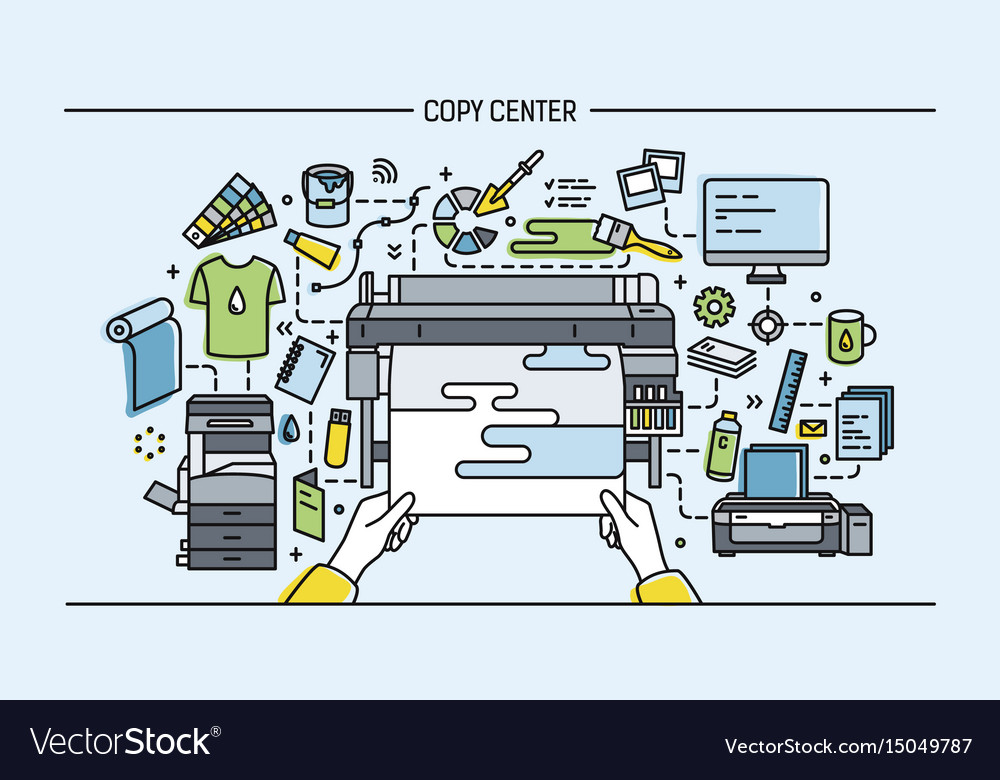 In March 1793, the convention gave the right to execute anyone who "revealed in compiling and printing writings that proclaim restoration in France royal power or the dissolution of the National Convention". Law of 17 September 1793 years "About suspicious" provided ruthlessly exterminate all who whatever way he showed himself "partisan of tyranny or federalism and enemy of freedom. These acts gave wide ability to deal with personal enemies. A mass perished on the scaffold journalists representing all political currents. domination bloody revolutionary dictatorship ended on July 27, 1794, when arrested and executed its head Maximilian Robespierre.
In March 1793, the convention gave the right to execute anyone who "revealed in compiling and printing writings that proclaim restoration in France royal power or the dissolution of the National Convention". Law of 17 September 1793 years "About suspicious" provided ruthlessly exterminate all who whatever way he showed himself "partisan of tyranny or federalism and enemy of freedom. These acts gave wide ability to deal with personal enemies. A mass perished on the scaffold journalists representing all political currents. domination bloody revolutionary dictatorship ended on July 27, 1794, when arrested and executed its head Maximilian Robespierre.
B years of revolution most popular used newspapers published under editorial or direct the participation of the main figures of the revolution, such as Jean Paul Marat, Camille Desmoulins, Maximilian Robespierre and others
One of the first was Elise Lustalo, who published newspaper "Revolutions de Paris" ("Parisian revolution"), which after death Lustalo was called the encyclopedia of the French revolution.
11. Traditions early Christian preaching journalism.
Historical sources show that the first centuries of Christianity, preaching was common accompanying the actual service to God (liturgy) and collective prayers. St. Justin, one of the early church fathers (II c.), describes Sunday as follows Christian congregation and its components - read Scripture, then a sermon, prayers, liturgy proper (rituals of thanksgiving and communion): “On the so-called day Sun - Sunday - happens with us gathering in one place of all living cities and villages; and read how much time permits, the tales of the apostles or the writings of the prophets. Then, when the reader cease, the primate through words give instruction and exhortation imitate those beautiful things.
Then Let's all stand up and send out prayers. When will we finish the prayer, as I did above said, bring bread, and wine, and water; and the primate also sends up prayers and thanksgiving as much as he can. People expresses his agreement with the word amen, and there is a distribution to each and fellowship Gifts over which Thanksgiving was performed, but those who have not been are sent through deacons. Instruction and exhortation of the primate imitate those beautiful things early Christian preaching. She was called homilia (Greek omilia - meeting, community; conversation, teaching). Later the term homiletics - "the rules for compiling sermons; the science of ecclesiastical eloquence. There is evidence that practical guides on homiletics compiled among other things and Origen (185-254), the famous theologian and biblical scholar.
Instruction and exhortation of the primate imitate those beautiful things early Christian preaching. She was called homilia (Greek omilia - meeting, community; conversation, teaching). Later the term homiletics - "the rules for compiling sermons; the science of ecclesiastical eloquence. There is evidence that practical guides on homiletics compiled among other things and Origen (185-254), the famous theologian and biblical scholar.
Sunday preaching in the medieval western Christianity, especially in large temples, was quite common. At the same time, guidelines for sermons were absent for a long time. It was believed that the pastoral word about God needs no rhetorical embellishments and that sincere faith will prompt the right word. Some of these views were supported apparent simplicity, compositional "Disorder" of the "Sermon on the Mount" or the epistles of the apostle Paul. That's why did not address the technique of preaching special attention. One of the fathers Western Church - Pope Gregory the Great in "Pastoral Care" (c. 591 year) wrote: “Whom the Lord has filled, he immediately makes eloquent” (quoted from the work: Gasy 1986, 99). However, with the development of the European rhetoric, with the rise in popularity of manuals how to write letters and business paper, in the XIII-XIV centuries. textbooks appear and according to church eloquence (lat. arspraedicandi - the art of preaching).
591 year) wrote: “Whom the Lord has filled, he immediately makes eloquent” (quoted from the work: Gasy 1986, 99). However, with the development of the European rhetoric, with the rise in popularity of manuals how to write letters and business paper, in the XIII-XIV centuries. textbooks appear and according to church eloquence (lat. arspraedicandi - the art of preaching).
B universities in the faculties of theology taught the so-called "thematic" sermon, distinguishing it from a homily as preaching "free", unsophisticated. AT "thematic" sermon was required according to certain logical and rhetorical rules to develop the "theme" declared in the title of the sermon. "Theme" could be a line from Scripture, praise of the feast or a saint (on whose feast day service), interpretation of the name of a saint or any name at all, discussion of event whose anniversary is on the day of the service, etc. Such sermons were read in temples, that is, they were a type of oral public ceremonial speech, however they were prepared in advance, that is, they existed both in writing and often afterwards published as essays representing an independent theological and journalistic aesthetic value.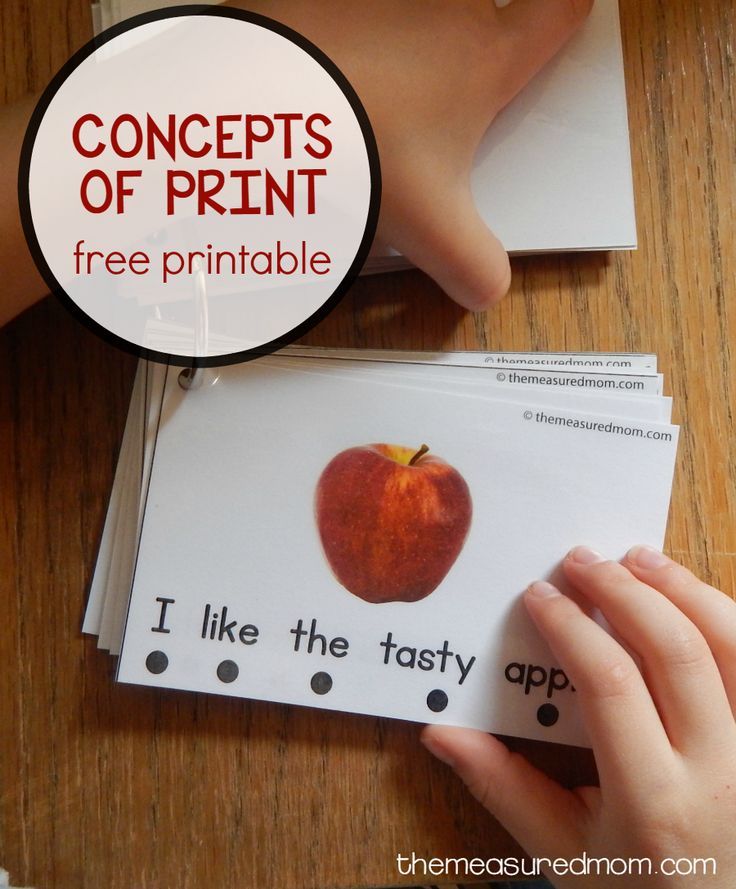
"Thematic" sermon (it was also called "university") for several centuries felt like the pinnacle ecclesiastical rhetoric.
Among famous scientist manuals church eloquence and Ukrainian homiletics - “Science, albo way of evil Kazan" (1659) Ioanniky Galyatovsky, Rector of the Kyiv Collegium, erudite and polemicist. He published this treatise in the book "The Key of Understanding" - a collection exemplary tales (sermons), intended as a practical guides for preachers. Author detail and just talks about two genres sermons for Sundays and funerals. Homiletics is written as advice from an experienced preacher to beginners - about how choose and deploy a theme, how to do sermon coherent, seek attention hearers as speaking of the unrighteous wealth, not too embarrass and frighten rich, how not to drive people to despair funeral word, etc. This is the first Eastern Slavs printed rhetoric. AT 17th century it has been reprinted twice more Kyiv and Lvov, translated into Church Slavonic for Moscow Rus' and was a reference book for many generations of priests.
12. Seal Germany 17.18 century.
B 1605 a new type of printing appeared in the world publications - newspaper. It was published in then German Strasbourg. By the end of the XVII century. in German speaking lands 60-80 different newspapers were published. They, though and corresponded to the concept of "newspaper" in modern sense, yet significantly differed from the newspapers of the 20th century, not only outwardly, but also in content.
B modern German "newspaper" called Zeitung. In the 17th century, under the word "Zeitung" was understood as any news, news. If they said that "I brought you Zeitung " it meant that "I have for you news". For the concept of "newspaper" - printed publications of a new type - first used the words "Avisen" and "Relationen", which were later forced out the modern word "Zeitung".
Long time there were disputes about who and where printed in Germany's first newspaper, and what in general count as a newspaper. Modern research showed that the first newspaper was "Relation", which he published in Strasbourg - then still German - Johann Carolus (German) Russian (Johann Carolus) from 1605 This was the first printed newspaper not only in Germany, but also in the world . Corolus got the idea to collect various news of recent events from the hands that came to the city from various sources, print them and publish once a week. The newspaper was called "Relation aller Fürnemmen und gedenckwürdigen Historien" (The news of all important and significant stories).
Modern research showed that the first newspaper was "Relation", which he published in Strasbourg - then still German - Johann Carolus (German) Russian (Johann Carolus) from 1605 This was the first printed newspaper not only in Germany, but also in the world . Corolus got the idea to collect various news of recent events from the hands that came to the city from various sources, print them and publish once a week. The newspaper was called "Relation aller Fürnemmen und gedenckwürdigen Historien" (The news of all important and significant stories).
headlines articles served sources of information, For example: "From Rome". The news was not systematized, but printed in that sequences as they did to the editor. Therefore, the latest news were at the end of the newspaper. If the news have not yet arrived, then about this and printed. At the beginning of the 17th century, news of events reached readers in in most cases after 2-4 weeks, at the end of the 18th century - during the French revolution - after 3-7 days.
News transmitted literally and in 3 out of 4 cases without comments. Political news took up about half newspapers. Courtiers dominated among them. news. Sources of information - noble courts - gave through newspapers news for peers. For them they were often an intermediary in the transmission information, especially for small yards, so many in Germany at that time, for whom newspapers replaced costly its mailing network.
Circulations newspapers were very small. Yes, the Frankfurt newspaper in the 1620s it was published in 450 copies. Average newspapers were printed in 350-400 copies. The largest circulation - in 1.500 - reached the Hamburg weekly Wöchentliche Zeitung. At the same time, it is necessary note that it is now believed that each newspaper was read by about 10 person [4] : newspapers lay in coffee houses and inns yards, taverns, special houses news (German Avisenbuden ) and they were publicly read, even in villages [5] . This means that if the circulation of the newspaper was 400 copies, then it reached about 4000 readers. Pay attention to the size of cities in the 17th century is a lot. Also it is believed that in the XVII century about 1/4 - 1/5 of the adult population knew about the latter events from the press, during the French revolutions about every second [4] .
Pay attention to the size of cities in the 17th century is a lot. Also it is believed that in the XVII century about 1/4 - 1/5 of the adult population knew about the latter events from the press, during the French revolutions about every second [4] .
Newspapers announcements (German Intelligenzblatt, Intelligenzwesen , English → General Advertiser, Public Advertiser, Intelligencer ) — one of the three directions in German periodical press until the 19th century, along with with newspapers and magazines, reached the greatest flourishing in the XVIII and the coming fell into disrepair by the middle of the nineteenth century.
AT Russian for German words Intelligenzblatt, Intelligenzwesen , meaning one of the three types of periodic publications that appeared in Europe in the 17th century, there is no exact analogue. According to the meaning, it can translate as "supply and demand newspaper" ( GSP ). Translation as "newspaper of private announcements" would be misleading because ads in them were significant partly not private.
German the word consists of two parts: from the Latin "intellégere", which means "to know", and German "Blatt" - "paper, newspaper". Thus, Intelligenzblatt is is a periodical that "useful things for knowledge" were printed, initially various proposals and announcements. Modern analogue of the first such publications - their content changed over time - one could call newspaper "From Hand to Hand"
Important do not confuse two different types of periodic editions: "ordinary" newspaper and newspaper "supply and demand". In the first news was published; the second represented initially something like public market, where everyone offered and informed others about what he wanted, including including the state. It was newspaper useful information, unlike newspapers with political news of which there is little practical benefit.
13. Appearance weekly newspaper.
Starting from 1609 weekly periodicals printed publications became rapidly spread throughout Europe: in 1610 d. printed weekly "Ordinari Wohenzeitung" began to be published in Basel, in 1615 to Basel joined by Frankfurt am Main and Vienna. In 1616 the newspaper appears in Hamburg, in 1617 - in Berlin, in 1618 - in Amsterdam, in 1620 - in Antwerp, Magdeburg, Nuremberg, Rostock, Braunschweig, Cologne.
printed weekly "Ordinari Wohenzeitung" began to be published in Basel, in 1615 to Basel joined by Frankfurt am Main and Vienna. In 1616 the newspaper appears in Hamburg, in 1617 - in Berlin, in 1618 - in Amsterdam, in 1620 - in Antwerp, Magdeburg, Nuremberg, Rostock, Braunschweig, Cologne.
What concerns Cologne, then in this city, starting from 1588 (and possibly earlier), Michel von Eitzing published twice a year a selection of political and military events semester called "Relatio Historica" ("Historical Bulletin") and sold its edition in autumn and spring on Frankfurt book fairs. At 159four another edition appeared in Cologne, covering the events of the past six months. "Mercurius Gallo Belgicus" ("Gallo-Belgian Mercury") came out in Latin and was known far beyond Germany.
K 1630 weekly newspapers appeared already in 30 European cities. rapid spread printed periodicals, and period from 1609 to 1700. only in Germany experts recorded walking about 200 newspapers, due to the increased level of typography, growth cities and an increase in demand for various information from the city population, the main consumer of this type of printed matter.
However the process of the appearance of the first newspapers in a number of countries was restrained by strict censorship rules governing the emergence printed products. ubiquitous introduction of the institution of preliminary censorship that appeared almost immediately after the invention of printing was state response to uncontrolled dissemination of ideas, opinions and information.
Already in 1502 a law was passed in Spain, according to which all printed publications had to go through preliminary censorship. Censorship functions were assigned on state and church structures. Edict of Worms 1521 against Luther, provided for the introduction prior censorship in Germany.
Reaction Catholic Church for the victory of the Reformation was the appearance in Rome in 1559 of the first "Index of Forbidden Books" published by Vatican and introducing censorship on publications, circulating in countries the Catholic world. Moreover, "Index forbidden books" pursued not only for writing, publishing and distributing forbidden books, but also for reading them and storage. It is no coincidence that John Milton his famous "Areopagitica" compared papal censorship with "secret monster" of the Apocalypse.
It is no coincidence that John Milton his famous "Areopagitica" compared papal censorship with "secret monster" of the Apocalypse.
Precisely censorship has led to the fact that the first printed newspapers in England and France appeared with relative late. In England in 1538 was adopted a law according to which any printer should have received a royal patent for their activities, and the workshop organization typographers - Book Publishers Company - was obliged not only to represent printed materials for preliminary censorship, but also monitor the activities members of your department. Ordinance 1585 regulated the appearance of the printed products and determined the quantity printing houses operating in the kingdom (their number should not exceed 20), functions of censorship in England were assigned to the so-called Star Chamber at Privy Council of the King, who played in the XVI-XVII centuries the role of the press committee. Right chief censors in the Star Chamber received by the Archbishops of London and Canterbury, without whose sanction not a single print could be published text. In France, the law of 1561 prescribed scourging distributors and authors of "slanderous" leaflets and pamphlets. In case of repeated violation the law of persons guilty were punished by death execution.
In France, the law of 1561 prescribed scourging distributors and authors of "slanderous" leaflets and pamphlets. In case of repeated violation the law of persons guilty were punished by death execution.
B conditions of severe censorship pressure the role of a kind of "catalyst" for appearance of English and French newspapers played Holland, which in XVII century was the most liberal country of Europe.
Authoritarian conception of the press - Studiopedia
it not only communicates news, but also sends directives (orders) to places
2) preliminary censorship
3) no sensations
4) truthful information is often sacrificed to the interests of power.
5) press structure – vertical.
Yus. State power exercises full control over the production of printed materials, namely over its ideological orientation
was formed in the era of absolutism, the monarchy and the church made printing an instrument of government the people
not a single book or newspaper could be printed without the consent of the authorities
La Gazette means of implementing the political program
the publisher could publish only what was beneficial for the government
all materials in the newspaper were made by order , or at least with permission of the king and cardinal
Richelieu was in fact its supreme editor.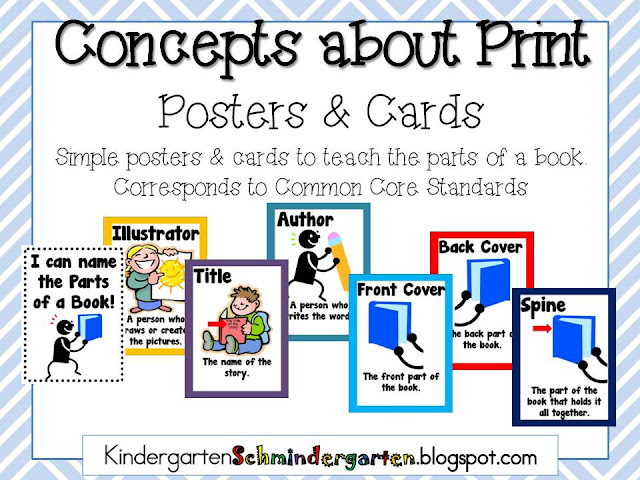
opposition publications banned , censorship monitored seditious writings that threatened the authority of the monarch and the church the government issued many laws restricting the printed word
a large number of temporal and spiritual authorities designed to destroy objectionable works
Violators were persecuted and were cruelly punished , until the use of death penalty
all this was inhibited by the development of the press in France - until the start of the FFR
1789-1794 - the Great French Revolution. stages)
bourgeois-democratic, a blow to the feudal-absolutist system , the ground for the development of capitalism
the insurgents (cross, workers - 3rd estate) stormed the Bastille - a symbol of French absolutism, revolution across the country
against - the constitutional-monarchist bourgeoisie and the liberal nobility, the constitutional monarchy
1792 - the abolition of royal power , a republic was established , Louis 16 was executed the Girondins came to power.
1792-1793 - struggle between Jacobins (Paris Commune, people, for the expansion of the revolution) and Girondins (Legislative Assembly, bourgeoisie, conservatives, stop the revolution).
1793-1794 - revolutionary democrat. Jacobin dictatorship, terror , head - Robespierre
1974 - counter-revolutionary coup of 9 Thermidor, overthrew the Jacobin dictatorship, end of the revolution,
Outcome: bourgeoisie, capital is the result of all revolutions (there is no absolute monarchy and power of the people)
1799 - the years of the Board of the Directory, i.e. defeat of the revolution
1789 - preliminary censorship was abolished without a long struggle, then - on the political freedom of newspapers
1789 — “ Declaration of the Rights of Man and Citizen”
Article 11: “ Free expression of thought and opinion is one of the most valuable human rights.






